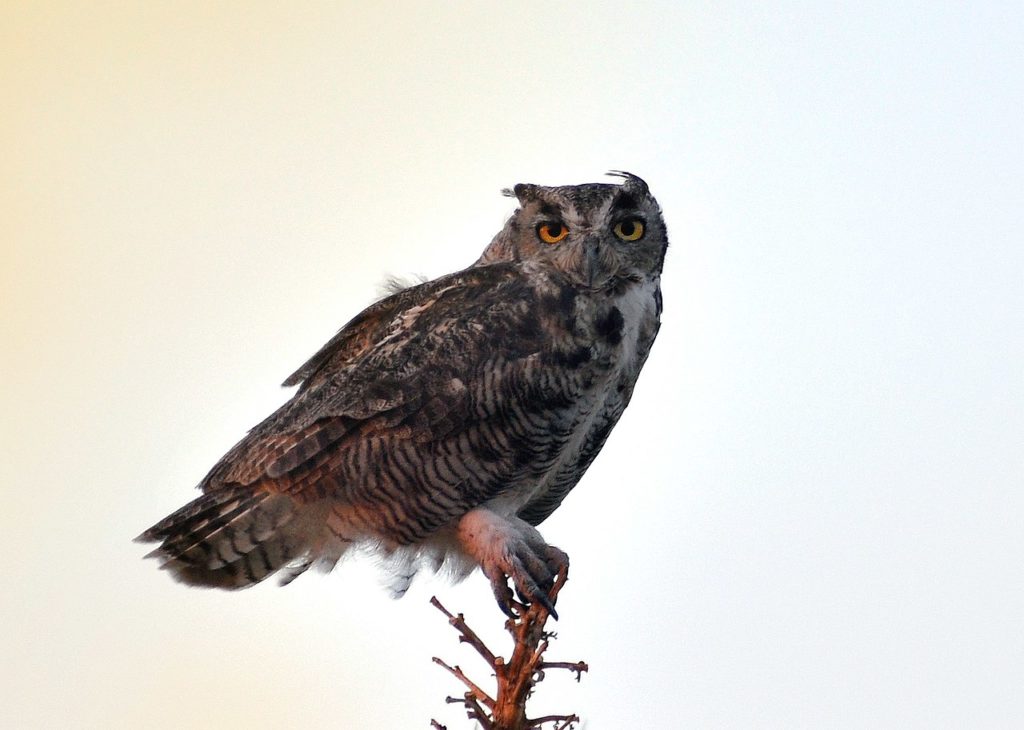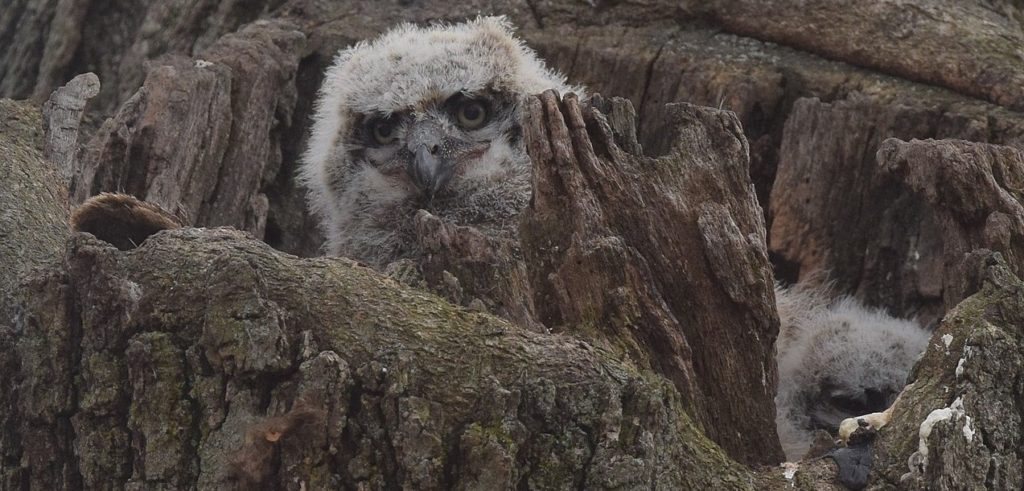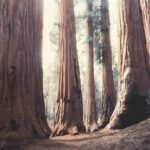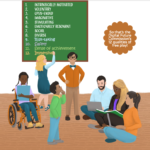
Photo by Jessie Eastland, 30 July 2017, 19:53:34
As I write before dawn this morning, I hear the interlocking songs of two Great Horned Owls. Even though I knew the sound of these birds in advance, I confirmed it with the Merlin Bird ID app, using it as much just to practice as to hear the song in the recording. Here is the description:
“Large and widespread owl with distinctive ear tufts. Found in a variety of habitats from dense woods to prairie and deserts with at least some trees. Also, found in wooded towns and suburbs. Typically well-camouflaged dark brown overall, but varies in color. Often engages in haunting duets with males and females hooting back and forth. Preys upon a variety of animals, including mammals, birds, and reptiles.”
I’m a “wooded town” dweller. Though I often see deer and wild turkeys, and a very, very occasional fox wandering the streets when I get out early enough, I am 5 minutes from cafes, grocery stores, and a bustling main street. I hear the owls on rare occasions that grace my days.
After I walked through the bird IDing process, I clicked the confirmation button “This is my bird!” and received the message: “Thank you! Your response has been recorded to improve Merlin’s accuracy. To save to your eBird Life List, submit this with the eBird app.”
I mentioned in my post last week that I would write about the next step from identifying birds…to stepping into your Citizen Scientist self and sharing your observations. In this post, I’ll introduce you to eBird…and the eBird app.
Merlin Bird ID and eBird are both projects of The Cornell Lab of Ornithology. Here is the description on the eBird website:
“eBird is the world’s largest biodiversity-related citizen science project, with more than 100 million bird sightings contributed each year by eBirders around the world. A collaborative enterprise with hundreds of partner organizations, thousands of regional experts, and hundreds of thousands of users, eBird is managed by the Cornell Lab of Ornithology.”
To get started, download the eBird app (available for iOS and Android) and begin to play with it. As with anything new, practice and patience are required, so give it little blocks of time to explore and learn your way around the app. Investigate how eBird uses the data from citizen scientists. If you’d like to take it a step further, sign up for the free course on eBird. Visit the Cornell Lab of Ornithology website in one of your family technology conversations. Challenge each other to identify the birds around you. We can make a difference in the extraordinary loss of bird species underway—by using these digital tools and becoming skillful citizen scientists.
NOTE: When I use the Merlin Bird ID app, I turn on location services in the Privacy section of my settings. You use Location Services when you drive using the map on your phone. I turn Location Services off when I am not using it for the app or for mapping. And I promise, I will write about iNaturalist soon.

Photo by Andy Reago & Chrissy McClarren 20 February 2017, 16:39


